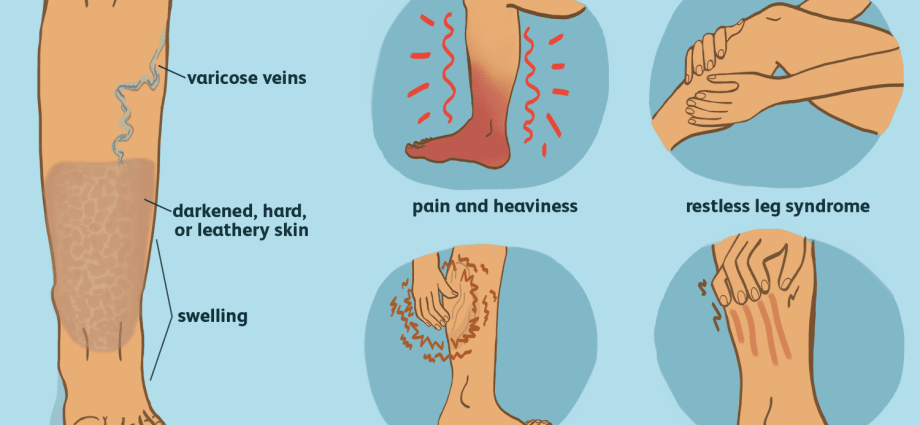Contents
Venous swelling is a stagnation of venous blood in the peripheral parts of the body. It is an edema accompanying venous disease, localized especially in the lower extremities and in more advanced stages of this disease C4 to C6 according to the international CEAP classification. It intensifies during the day, peaking at the end of the day.
Venous swelling – definition
Venous swelling is a condition characterized by a build-up of venous blood in the peripheral parts of the body. This is the most common form of leg swelling. It occurs most often due to overload of the lymphatic system. The prevalence of venous edema ranges from 1% to 20% and increases with age; more often present in women over 60 years of age. The swelling increases during the day and reaches its peak in the evening. In addition, leg swelling often occurs after flying, even if our veins are healthy.
IMPORTANT: The lymphatic system and the venous system work together to drain fluids. Therefore, if the venous system is damaged, the lymphatic system fails. Venous swelling that does not resolve spontaneously within a few hours may indicate chronic venous insufficiency.
Causes of venous edema
The cause of venous edema is retrograde blood flow (reflux), obstruction of venous drainage or both, and thrombophlebitis.
Other reasons:
- lymphatic insufficiency,
- fatty swelling,
- deep vein thrombosis,
- gravitational swelling,
- cyclical premenstrual edema,
- endocrine swelling,
- swelling due to potassium and albumin deficiency,
- swelling caused by taking medications,
- swelling caused by pressure on the veins and lymphatic vessels,
- iatrogenic swelling
- swelling as a result of self-harm.
Butcher’s broom has a supportive effect on venous circulation, which also relieves swelling. You will find CircuVena – the YANGO dietary supplement.
Symptoms of venous edema
The lesions are mainly located in the lower limbs (most often around the ankles, where the greatest hypertension is), less often in the upper limbs, and the neck. The swelling develops during the day and disappears when you lift your legs up while resting. Swelling resulting from the overload of the lymphatic system moving towards the foot and becoming more resistant to pressure. Thick folds of skin appear on the back of the foot, and the ankle joint becomes stiff and has problems with mobility. The overloaded lymphatic system gradually becomes more and more inefficient, which in turn causes the further stages of the edema to have the features of lymphedema.
Often with venous edema, there are:
- leg pain,
- varicose veins,
- contractions,
- phlebitis and thrombosis
- widening of the veins,
- keratosis and cracking of the skin around the ankles.
In patients who develop venous insufficiency, further symptoms appear in the area of the ankles:
- venous eczema,
- leg ulcers,
- very strongly dilated veins in the ankles,
- white atrophic scars.
Later in the development of the ailment, the patient has the illusion that the swelling is disappearing around the ankles, but the leg resembles an inverted bottle of champagne – it is very thin around the ankles, but swollen above.
To relieve swollen legs and support the fight against varicose veins, try Venosil gel for varicose veins and puffiness.
Diagnosis of venous edema
Edema should be examined standing or lying down, venous edema is diagnosed by pressing a finger on the shin for 1 minute. If there is a fove after pressing the skin, this indicates venous or lymphatic edema, cardiac or renal edema, and the absence of a fove indicates its fatty origin. Additionally, a limb circumference measurement is performed in the same places on both limbs to compare the two limbs at the same time. Next to the measurement, the date and time of the measurement should be entered in order to observe the seasonal and daily dynamics of changes in the limb volume.
Instrumental examination can be performed using a duplex scan or magnetic resonance imaging technique. It is recommended to wear compression products with gradual pressure, take care of the correct body weight, manual massages and hydro massages.
Venous edema should be differentiated with the following symptoms:
- lymphoedema,
- fatty swelling,
- cardiac swelling
- renal edema
- drug swelling,
- edema of electrolyte origin.
How to Treat Venous Edema?
In the treatment of venous edema, the most effective is causal (surgical) treatment – removing the cause of venous blood stagnation, then compression therapy (factory-made elastic products, also made to measure, single and multi-chamber pneumatic cuffs, vacuum devices, elastic bandages). In addition, pharmacotherapy is implemented – fleboactive drugs, diuretics.
Taking into account the fact that any surgical intervention is associated with the risk of lymphangitis and bacterial or fungal infection, surgery should be preceded by Comprehensive Anti-Stagnation Therapy. It not only improves the condition of the skin, but also relieves the lymphatic system.
How to prevent venous edema?
Prevention of venous edema involves:
- practicing physical activity,
- gradual compression through elastic bandages.
To support the circulatory system, it is worth reaching for the natural venous circulation supplement – Pharmovit drops extract.
Lit .: [1] Partsch H., Rabe E., Stemmer R.: Compression therapy of the extremities. Editions Phlebologiques Francaises 2000. [2] Stemmer R.: Strategies of treatment by compression and moblisation. Editor Sigvaris Ganzoni CIE AG 1995. [3] Shumi S.K., Cheatle T.R.: Fegan’s compression sclerotherapy for varicose veins. Springer 2003. [4] Jarrett F., Hirsch S.A.: Vascular surgery. Mosby Company, St. Louis 1985.
Source: A. Kaszuba, Z. Adamski: “Lexicon of dermatology”; XNUMXst edition, Czelej Publishing House










